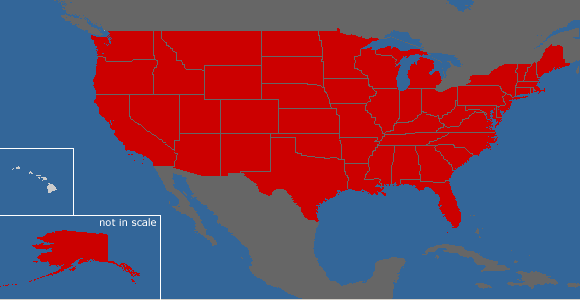Large Databases Used by ALS Registry Ably Capture Disease Prevalence in US, Study Reports

Federal healthcare databases, especially Medicare, are a valuable resource in identifying cases of amyotrophic lateral sclerosis (ALS) in the U.S. population, and may help in tracking the prevalence of other neurological diseases as well, a group of researchers report.
The study, “Estimation of the Prevalence of Amyotrophic Lateral Sclerosis in the United States Using National Administrative Healthcare Data from 2002 to 2004 and Capture-Recapture Methodology,” was published in the journal Neuroepidemiology.
ALS prevalence in the U.S. was, until recently, difficult to assess due to the lack of a nationwide disease registry or coordinated surveillance system.
But the federal Agency for Toxic Substances and Disease Registry (ATSDR) established the National ALS Registry in 2009. That registry bases its estimated on an analysis of combined data from several national healthcare administrative databases (Medicare, Medicaid, and Veterans Administration data).
A team of researchers set out to evaluate the registry’s accuracy by using a similar approach (same three national health databases), but focusing on ALS prevalence between 2002 and 2004, before its establishment.
“The administrative data files include computerized records documenting outpatient visits, inpatient hospitalizations, clinical procedures, laboratory results, and medication prescriptions,” the researchers wrote.
They developed an ALS case identification computer program and categorized people identified into three distinct groups — definite ALS, possible ALS, and not ALS. Additionally, their analysis included a statistical method, called capture-recapture, to identify overlap cases between the different data sources.
Estimates from combining the three revealed a steady increase in the annual ALS prevalence, from 3.7 per 100,000 in 2002, to 4.4 in 2003, and 4.8 per 100,000 in 2004.
These estimates were highly similar to those determine by National ALS Registry scientists for the years 2009 to 2011, “which reported crude point and annual period prevalence estimates ranging from 3.8 to 4.4 per 100,000,” the researchers wrote.
National ALS Registry estimates for 2012 and 2013 continue to show a steady increase in disease prevalence — 4.7 cases per 100,000 U.S. inhabitants (2012) increasing to 5 cases per 100,000 in 2013.
These results “support the conclusion that reliance only on federal databases for ascertaining ALS cases may ascertain more than 75% of ALS cases in the United States,” the researchers wrote.
Among the three databases, Medicare was the major contributor to case identification and used to pinpoint 92% of all identified cases. The Medicare database aided in identifying 64% of cases not detected by the two other sources, the researchers said.
“If Medicare had been used as a single source, only a small percentage of ALS cases would have been missed who were identified solely through Medicaid (3%) or the VA (4%),” they added.
Although no database used covers the entire U.S. population, they together include a large proportion of it — Medicare especially, since it is an entitlement available to all citizens ages 65 and over.
Overall, “our analysis suggests that administrative healthcare data sources provide an excellent methodological foundation for estimating national ALS prevalence in a large country with a fragmented healthcare system, and may be valuable for tracking cases of other neurological diseases and estimating the extent of their prevalence,” the study concluded.






